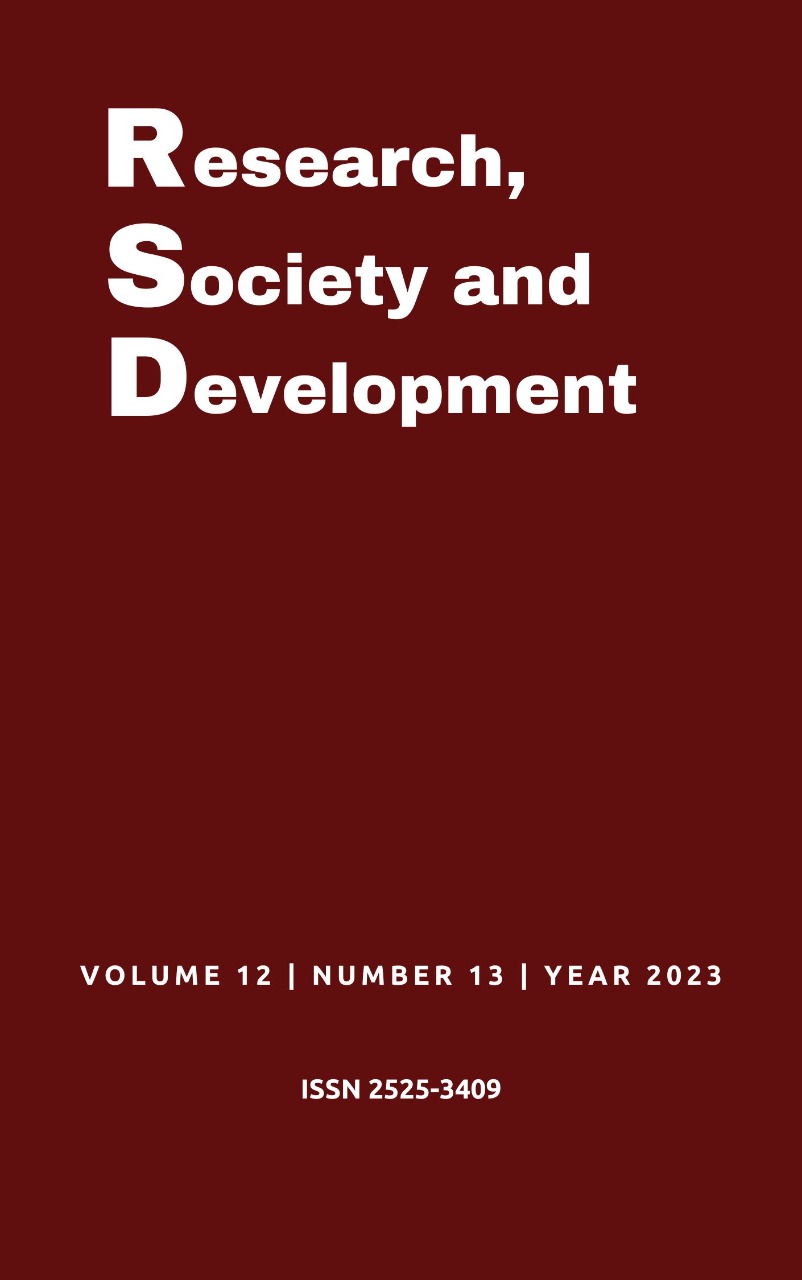Punto de descompresión torácica: Nueva recomendación del ATLS 10
DOI:
https://doi.org/10.33448/rsd-v12i13.43787Palabras clave:
Atención de apoyo vital avanzado en trauma, Descompresión quirúrgica, Neumotórax.Resumen
La acumulación de fluidos (gas o líquido) en la cavidad pleural es un proceso secundario recurrente en el trauma torácico. La presencia de contenido en el espacio entre las pleuras parietal y visceral provoca la falla de la presión negativa que permite la función pulmonar, lo que resulta en la restricción del volumen corriente del pulmón, llevando a un cuadro de insuficiencia respiratoria restrictiva. Las lesiones torácicas que ponen en peligro la vida del paciente pueden ser el resultado de la obstrucción de las vías respiratorias, lesiones en el árbol bronquial y la tráquea, neumotórax hipertensivo, neumotórax abierto y taponamiento cardíaco. La mayoría de estas condiciones pueden controlarse mediante la descompresión torácica, un procedimiento en el que se realiza la expulsión inmediata del contenido que ha invadido la cavidad pleural. Sin embargo, las ediciones posteriores de 2012 y 2018 del Soporte Avanzado de Vida en Trauma (Advanced Trauma Life Support - ATLS) describen enfoques diferentes para la técnica analizada, con cambios en cuanto al punto de descompresión y la vía de acceso a la cavidad pleural. El presente trabajo se basa en una revisión bibliográfica de las consideraciones técnicas y anatómicas utilizadas por el Comité de Trauma del Colegio Americano de Cirujanos para tomar la decisión de modificar la intervención quirúrgica en la maniobra de descompresión torácica, así como en el análisis de las diferentes técnicas descritas en 2012 en la novena edición del ATLS y en 2018 en la décima y más reciente actualización del protocolo.
Referencias
Abib, S. C. V, & Perfeito, J. A. J. (2012). Guia de trauma. Brasil.
American College of Surgeons. (2012). Pneumotorax hipertensivo. Advanced Trauma Life Support (ATLS). (9a ed.). Chicago, IL.
American College of Surgeons. (2018). Algorítmo de PCR Traumática. Advanced Trauma Life Support (ATLS). (10a ed.). Chicago, IL.
ATLS Subcommittee, American College of Surgeons’ Committee on Trauma, International ATLS working group. (2013). Advanced trauma life support (ATLS®): the ninth edition. Journal of Trauma and Acute Care Surgery, 74(5), 1363-1366.
Ball, C. G., et al. (2009). A caveat to the performance of pericardial ultrasound in patients with penetrating cardiac wounds. Atlanta, Estados Unidos: Journal of Trauma.
Carmont, M. R. (2005). The Advanced Trauma Life Support course: a history of its development and review of related literature. Postgraduate Medical Journal. 81 (952): 87-91.
Clancy, K., et al. (2012). Screening for blunt cardiac injury: an Eastern Association for the Surgery of Trauma practice management guideline. Journal of Trauma. 73(5 Suppl4), S301–S306.
Colicott, P. E. (1992) Advanced Trauma Life Support (ATLS): past, present, future--16th Stone Lecture, J Trauma. 33(5):749-53.
Cook, J. et al. (2006) The effect of changing presentation and management on the outcome of blunt rupture of the thoracic aorta. J Thorac Cardiovasc Surg. (3):594–600.
Demetriades, D., et al. (2008). Diagnosis and treatment of blunt aortic injuries: changing perspectives. Journal of Trauma. 64, 1415–1419.
Demetriades, D., et al. (2008). Operative repair or endovascular stent graft in blunt traumatic thoracic aortic injuries: results of an American Association for the Surgery of Trauma multicenter study. Journal of Trauma. 64, 561–571.
Dunhan, C. M., et al. (2003). Guidelines for emergency tracheal intubation immediately following traumatic injury: an EAST Practice Management Guidelines Workgroup. Journal of Trauma. 55, 162–179.
Ekeh, A. P., et al. (2008). Is chest x-ray an adequate screening tool for the diagnosis of blunt thoracic aortic injury? Journal of Trauma. 65, 1088–1092.
Flagel, B., et al. (2005). Half a dozen ribs: the breakpoint for mortality. Surgery. 138, 717–725.
Galvagno, S. M., et al. (2019). Advanced Trauma Life Support® Update 2019. Anesthesiology Clinics. 10.1016/j.anclin.2018.09.009.
Harcke, H. T., et al. (2007). Chest wall thickness in military personnel: implications for needle thoracentesis in tension pneumothorax. Military Medicine. 172(120), 1260–1263.
Harris, T, & Leigh-Smith, S. (2005). Tension pneumothorax – time for a re-think? Emergency Medicine Journal. 22:8-16.
Hershberger, R. C., et al. (2009). Endovascular grafts for treatment of traumatic injury to the aortic arch and great vessels. Journal of Trauma. 67(3), 660–671.
Radvinsky, D. S., et al. (2012). Evolution and development of the Advanced Trauma Life Support (ATLS) protocol: a historical perspective. Orthopedics. 35(4): 305-11.
Sousa, A. S, Oliveira, G. S, & Alves, L. H. (2021). A pesquisa bibliográfica: princípios e fundamentos. Cadernos da Fucamp. 20 (43), 64-83
Descargas
Publicado
Número
Sección
Licencia
Derechos de autor 2023 Jonas Silva Pereira do Amaral; Luísa Henriques Penteado Borges; Sarah Oliveira Resende; André Luis Perez Solera

Esta obra está bajo una licencia internacional Creative Commons Atribución 4.0.
Los autores que publican en esta revista concuerdan con los siguientes términos:
1) Los autores mantienen los derechos de autor y conceden a la revista el derecho de primera publicación, con el trabajo simultáneamente licenciado bajo la Licencia Creative Commons Attribution que permite el compartir el trabajo con reconocimiento de la autoría y publicación inicial en esta revista.
2) Los autores tienen autorización para asumir contratos adicionales por separado, para distribución no exclusiva de la versión del trabajo publicada en esta revista (por ejemplo, publicar en repositorio institucional o como capítulo de libro), con reconocimiento de autoría y publicación inicial en esta revista.
3) Los autores tienen permiso y son estimulados a publicar y distribuir su trabajo en línea (por ejemplo, en repositorios institucionales o en su página personal) a cualquier punto antes o durante el proceso editorial, ya que esto puede generar cambios productivos, así como aumentar el impacto y la cita del trabajo publicado.


